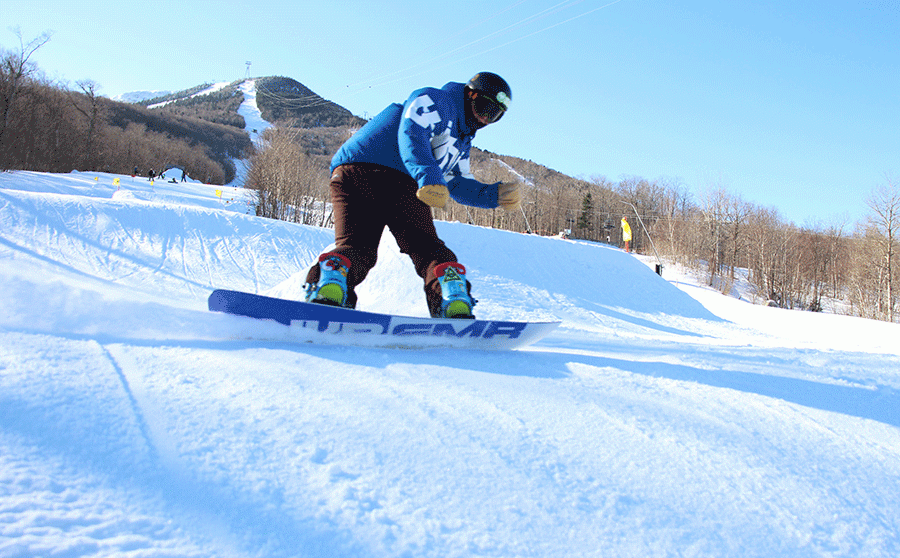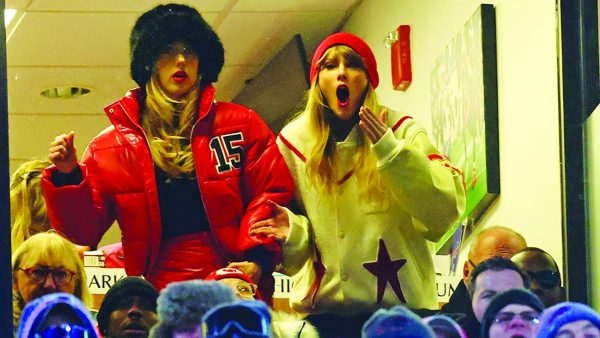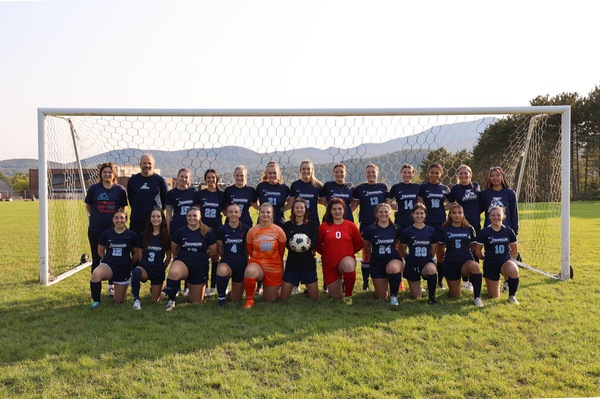Mountain recreation is crucial to Vermont’s overall economic health
Nick Garcia slashing over a knuckle at Jay Peak
It’s no secret that Vermont is highly associated with the skiing and snowboarding industry. With climate change and global warming warnings on the rise, what could potentially be at stake for The Green Mountain State when considering its future business with winter mountain resort recreation?
Resorts like Killington, Jay Peak, Okemo, Stowe, Sugarbush, and Smugglers Notch are a number of the larger resorts and employers throughout the state. They bring in a significant amount of tourism and out-of-state money to their surrounding communities on top of what gets spent at the resorts.
Communications Manager for Ski Vermont, Chloe Elliott, says that all of Vermont’s resorts play an integral role in Vermont’s economy. “Together they account for 900 million dollars in direct spending per season and another 700 million dollars in indirect and induced spending,” she said. “With this, we have remained fairly steady at about four million visits a year for a while now,” she added.
At Jay Peak, General Manager Steve Wright noted that the resorts in Vermont are also crucial to local economies. “Since the installment of our new amenities that began around 2007 at Jay, unemployment figures have improved dramatically within our surrounding communities,” he said.
Echoing Wright’s observations on the importance of Jay Peak to the local communities surrounding it, Michael Joseph, communications and public relations manager for Killington Mountain Resort says that Killington is one of the largest employers in Rutland County, with Rutland being the state’s second largest city. “We have been putting a lot of focus into being a four-season destination opposed to just a winter destination, which definitely adds a lot to the local economy,” said Joseph.
Candice White, vice president of communications and brand management for Sugarbush noted that the resort has approximately 150 year round workers, and that during the winter time numbers reach close to 1000 including full-time, part-time, seasonal, and volunteer workers.
Jeff Wise, marketing and communications director for Stowe Mountain Resort, pointed out that other than the regional hospitality and retail business, the taxes placed on various things like rooms and meals at resorts benefit the state.
According to Bonnie MacPherson, Okemo’s director of public relations, a lot of people who are skiers and riders associate Vermont with winter recreation but most people don’t realize that a number of resorts have a good deal of visitors in the summer and fall. “In the past few years, we have recognized summer as growth potential. Our summer activities really helped us recover to some extent from last winter,” she said.
Smugglers Notch Public Relations Director Mike Chait says that the impact on the industry is always greater with events like last winter’s warm temperatures and meager snowfall and that likewise there is a boost in numbers with good snow years.
Even with all of the exciting new developments at many Vermont resorts, when referring to seasonal statistics, Elliott notes that it is as if things have been floating given winter stats. “Bearing witness to this industry, specifically in Vermont, and the daily happenings and interactions I have with resort employees, and skiers and riders who visit this state, the energy among ski and snowboard enthusiasts is very much alive,” she said.
Skier and rider passion aside, mountain resorts are increasingly recognizing the need for substantial investment in year-round attractions. Wright notes that the largest opportunity for growth at Jay will deal with lodging and non-winter activities, not surprising considering the additions of two large hotels, a massive water park and an 18-hole golf course.
Joseph says that at Killington, summer business has been growing year after year and that it is in line with some investments that they have made. “We have added more attractions, including the expansion of our mountain bike trail network,” says Joseph. “Mountain bikers are a demographic that definitely has a lot of money to spend; they travel for their sport regularly, like skiers.”
On top of the recently developed summer activities at Okemo, MacPherson says that when looking ahead they are thinking of possible capital expenditures for new amenities, as well as ways to better utilize the assets that they already have. “There is a wide range of ideas and opportunities to grow the business,” says MacPherson.
Like several of the larger resorts around the state in recent years, this year, Smugglers Notch will be pushing the 60-year mark. Chait says that they have come a long way in that time. “We have had a lot of experience figuring out what works and what doesn’t in terms of business,what’s popular and what’s not, and trying to dial in our setup around that,” he said.
When considering the major spenders for the resorts around the state, out of state visitors is what really brings skiing in Vermont to the bank and has been since its beginnings. “Out of staters who lodge with us are the single biggest revenue segment, mainly those who stay with us,” said Wright. “Skiing and riding admissions at Jay account for the second highest index of profitability following lodging here.” Wright also stressed the importance of the tax revenues Jay and other resorts bring to the state’s coffers.
Despite all of the new summer amenities that resorts are investing in, the bulk of lodging, lift tickets, and sales continue to be in the winter time statewide. “We don’t see a crowd of ten to fifteen thousand people in the summer, where you might see that on almost any given Saturday in the winter time here at Killington,” said Joseph.
Elliott says that the amount of money resorts bring to winter recreation is integral to the well-being and future of tourism and recreation in Vermont. “Tourism makes up ten percent of Vermont’s gross domestic product, and ski tourism makes up approximately one third of that.”
MacPherson noted that the summer is about 20 percent of Okemo’s overall business, and that they are hoping to grow it. “Staffing is always a big challenge for everyone in the state considering the state’s relatively low unemployment numbers,” she said.
At Stowe, Wise says that their overall goal is to increase revenue every year across various revenue centers ranging from three to 20 percent. Like many resorts, Wise says that winter revenue is still the majority for Stowe too. “The town of Stowe gets about one million summer visitors versus half that in winter,” said Wise. “The difference in revenue being that most of Stowe’s winter guests come here for the mountain, and summer visitors don’t look to physically spend time at the mountain.”
Like most resorts, White pointed out that winter is by far our most profitable season at Sugarbush. “Low snowfall and high temperatures keep a certain number of visitors away during the winter,” said White. “This is why it is always a great thing whenever we have good weather and ski conditions that coincide with busy holiday periods.”
When looking ahead, Elliott notes that the winter aspect of the industry has stayed steady over the past 10 years, and that she doesn’t expect much change. “We will continually need to attract newcomers to winter sports, and we will need to do this rapidly as boomers leave the industry and more millennials join,” she said.
For weather so far this season, most of the state is experiencing what is hopefully the end of their seasonal January Thaw right now, where temperatures will typically range from the high 20 to 40- degree Fahrenheit marks. This usually comes with a number of rainy periods, which in turn often deteriorates natural snow pack.
Despite somewhat lackluster snow accumulations in the lowlands so far this winter, some mountain resorts have already or are beginning to approach last season’s snowfall totals. On Jan. 19, Jay Peak Resort passed the 208 inch natural snowfall total for last season.
MacPherson says that Okemo has done fairly well thus far this year. “It’s all about the snow, and if we don’t have good snow or snowmaking weather our business hurts,” she said. “We are a little like farmers in that way. Each season is a little different and weather dependent, so we hope for the best.”
Helping the resorts across the state were early measurable snowfalls throughout late November and right through December.
The appeal of Vermont brings visitors back every year, Elliot says: “We’re number one on the East Coast for skiing and snowboarding. Our resorts are ranked among the best in the nation. Add all of that to the beauty of the Green Mountains, the luxurious yet rustic feel found in our quaint small towns and, of course, the good nature of Vermonters and we make a very appealing and
sought-after state.”
Yes, all the resorts are in competition with each other for business, but big or small, they are all a part of the greater picture that is the skiing and riding industry in Vermont. They all bring tourism business to the state. Considering the important role winter recreation plays in the overall economic well-being of Vermont, the problem of climate change could drastically affect both ridgelines and bottom lines.
Ed Note: Next issue, our outdoor adventure editor, Ian Major, will examine how resort owners are preparing for what many feel will be inevitable: increasingly unreliable natural snowfall and above-normal winter temperatures.










Todd Perlman • Feb 3, 2017 at 10:38 am
Vermont should conduct a review of all the mountain leases our ski resorts are operating under to determine if they are fair or if they are out of date. No argument that the industry brings dollars to Vermont, but the resort owners who lease our mountains should be open to renegotiating their leases to provide more of those profits to the state of Vermont, instead of to shareholders worldwide. They are not open to the idea.